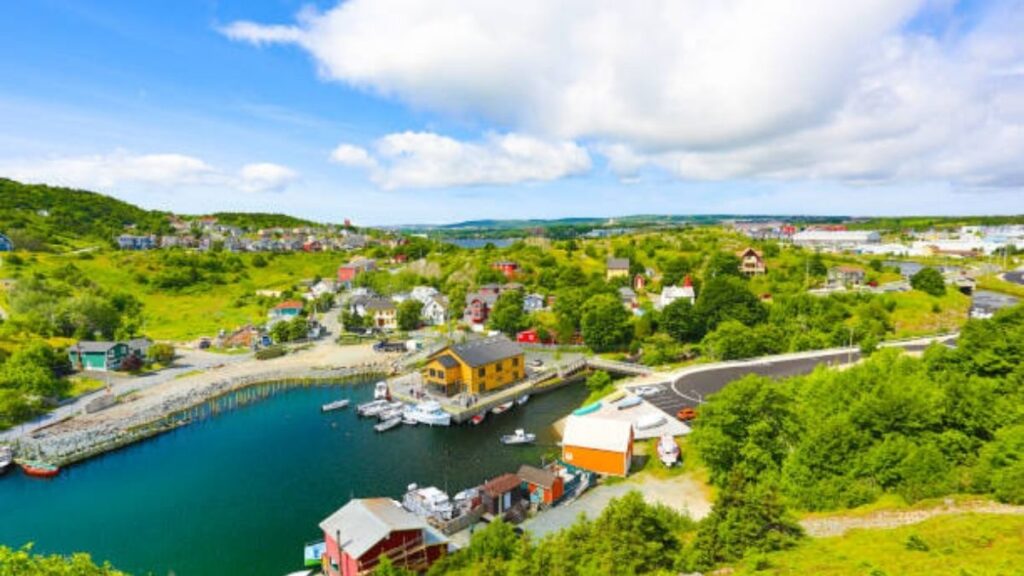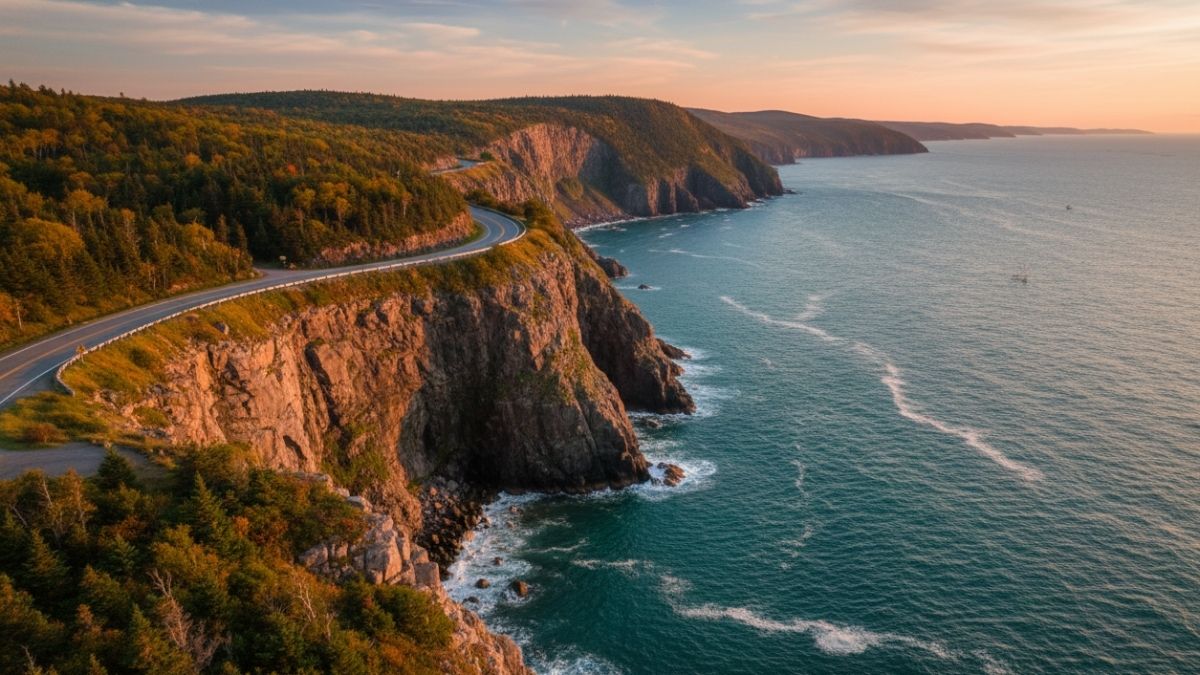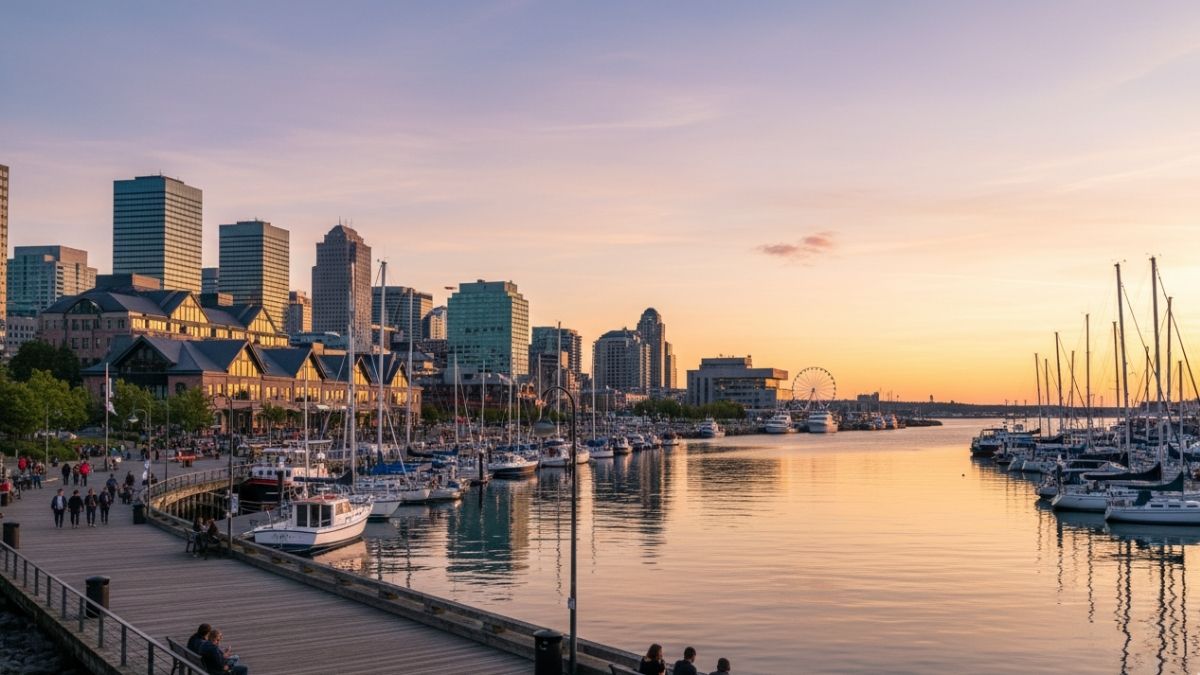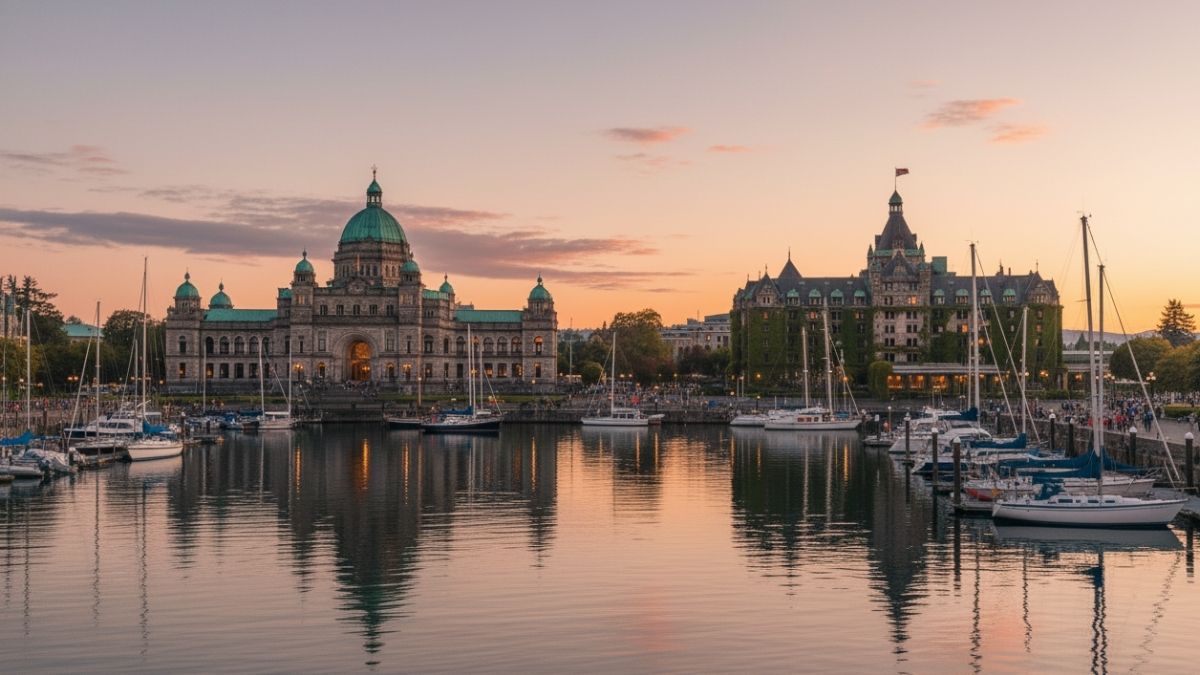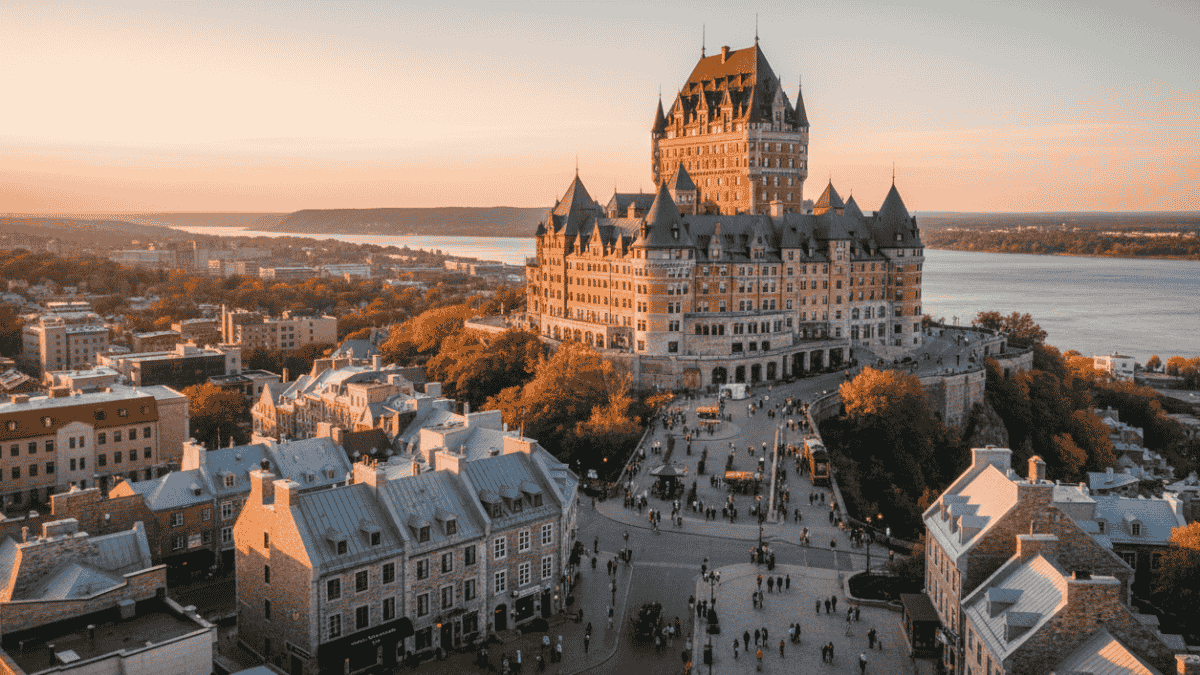Newfoundland becomes Canada’s easternmost island where the ocean meets cliffs, villages cling to the coast, and time seems to slow down just enough for you to truly take it all in. This Newfoundland Travel Guide will help you explore the highlights, plan your routes, and experience this unique island like a local.
Whether you’re drawn by history, wildlife, food, or raw beauty, Newfoundland is the kind of destination that stays with you long after you’ve left.
Getting to Know Newfoundland

Newfoundland sits at the far eastern edge of North America, forming part of the province of Newfoundland and Labrador. It’s an island of contrasts — vast yet welcoming, wild yet deeply cultural.
The people here are known for their humor, storytelling, and heart. And once you start talking to a Newfoundlander, you’ll quickly realize: this isn’t just another stop on your travel list — it’s a place with soul.
The island’s capital, St. John’s, is one of the oldest cities in North America, full of brightly colored houses, steep hills, and a harbor that has seen centuries of explorers and fishermen come and go.
But Newfoundland’s beauty extends far beyond the city. From the fjords of Gros Morne National Park to the iceberg-dotted coastlines of Twillingate, this island is a masterpiece carved by wind, time, and the sea.
For trip inspiration and detailed travel advice, check out the official Newfoundland & Labrador Tourism website.
If you’d like to experience the Newfoundland travel guide in its fullness — grab your FREE Newfoundland Travel Guide eBook.
But if you like the feeling of holding a physical book in your hands! You can also order the paperback on Amazon or Lulu Bookstore.
Simply enter your name and email below to get the instant download.
WorldTourGuide made trip planning simpler for tourists. You can also grab your Traveler’s Toolkit — trusted by a lot of explorers in our travel community to plan trips smarter, pack lighter, and travel better.
Grab yours now at our Travel Digital Store. You’ll later be proud of yourself for getting one.
How to Get to Newfoundland
Getting to Newfoundland is part of the adventure — and there are two main ways to do it: by air or by ferry.
✈️ By Air:
Most travelers arrive via St. John’s International Airport (YYT), which connects to major Canadian cities like Toronto, Montreal, Halifax, and Ottawa. For exploring the west coast or national parks, you can fly into Deer Lake Regional Airport (YDF) or Gander International Airport (YQX). Flights from Toronto take roughly 3 hours.
🚢 By Ferry:
If you prefer to bring your car or RV, hop on the Marine Atlantic ferry from North Sydney, Nova Scotia. There are two routes:
North Sydney → Port aux Basques (6–8 hours, runs year-round)
North Sydney → Argentia (16–17 hours, summer only, lands closer to St. John’s)The ferry ride is scenic, relaxing, and offers a taste of maritime life before you even step foot on the island.
Best Time to Visit Newfoundland

If you’re wondering what’s the best month to visit Newfoundland. Here’s the breakdown:
Spring (April–early June): Cool, misty, and quiet. Perfect if you love solitude, foggy coastlines, and iceberg viewing. The famous Iceberg Alley comes alive this time of year, especially in Twillingate and Bonavista.
Summer (late June – early September): Peak travel season — warm weather, festivals, and whale watching galore. Expect daily highs between 15–25°C (59–77°F). It’s the best time for hiking, kayaking, and exploring coastal towns.
Fall (mid September – early November):Crisp air, colorful foliage, and fewer tourists. Ideal for photography, scenic drives, and cozy village stays. Prices for accommodations drop slightly, too.
Winter (November–March): Cold, quiet, and beautiful in its own rugged way. Great for skiing at Marble Mountain, snowshoeing, and experiencing Newfoundland’s cozy, small-town charm — just pack layers and expect snow.
If you’re after whales and icebergs, late spring to mid-summer is unbeatable. If you love calm, crowd-free travel, fall will be your sweet spot.
N.B.: If you organize your trip early and pack smart using our recommended travel gear essentials and trusted travel and affiliate partners below, you’ll skip the “I wish I knew” stress. From booking flights to finding the best travel deals, these are the gears that make every journey smoother — and save you money while you’re at it.
Top Things to Do in Newfoundland
1. Explore St. John’s
The capital is colorful, walkable, and full of history. Wander through Jellybean Row, enjoy live music on George Street, and hike up to Signal Hill for sweeping ocean views. Don’t miss Cape Spear, the easternmost point in North America — it’s where the continent greets the sunrise first.
2. Visit Gros Morne National Park
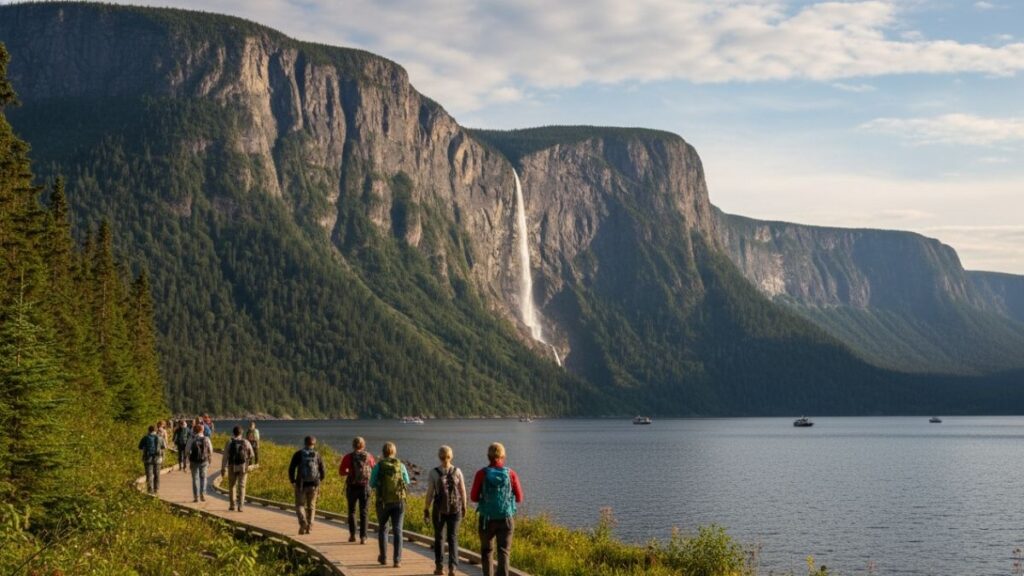
A UNESCO World Heritage Site and a true highlight of this island. With fjords, towering cliffs, and trails that reveal Earth’s ancient geology, Gros Morne feels otherworldly. Popular hikes include Gros Morne Mountain, Tablelands Trail, and the boat tour on Western Brook Pond.
3. Go Iceberg and Whale Watching
If you’re here between May and July, massive icebergs drift past the coast. Book a boat tour from Twillingate, Bonavista, or St. Anthony to see them up close — often alongside humpback whales and puffins. It’s an unforgettable natural show.
4. Discover the Viking Past at L’Anse aux Meadows
Located on the northern tip of the island, this UNESCO site marks where Norse explorers landed over 1,000 years ago. You can walk among reconstructed sod houses and imagine the lives of Leif Erikson’s crew — the first Europeans in North America.
5. Drive the Irish Loop
This scenic coastal route south of St. John’s takes you through charming fishing towns, rugged cliffs, and the ecological reserve at Cape St. Mary’s, where thousands of seabirds nest. The drive is one of the most beautiful in Atlantic Canada.
6. Take a Lighthouse Tour
Newfoundland’s coastline is dotted with historic lighthouses — each with its own story. Cape Spear, Bonavista, and Point Amour are among the most iconic, offering panoramic views, heritage exhibits, and epic photo ops.
7. Explore Fogo Island
Remote, artistic, and rawly beautiful — Fogo Island is a destination in itself. You’ll find local crafts, wild hiking trails, and the striking Fogo Island Inn, famous for its modern design and deep cultural roots. Getting there requires a ferry, but it’s worth every minute.
Newfoundland features stunning provincial parks — see all of them on the ParksNL provincial parks website.
Iconic Newfoundland Dishes You Should Try
Newfoundland’s food is hearty, comforting, and tells the story of its people. Here are a few must-tries:
Jiggs’ Dinner: A Sunday tradition of boiled salt beef, root vegetables, and pease pudding — simple, filling, and delicious.
Cod & Scrunchions: Salted cod with crispy pork bits. A Newfoundland classic that defines local cuisine.
Toutons: Fried bread dough served with butter and molasses — perfect for breakfast or a sweet snack.

Partridgeberry Pie: Tart, wild, and full of local flavor. Pair it with tea for the full experience.
Newfoundland Screech: The famous local rum that comes with its own tradition — the “Screech-In” ceremony. Yes, you kiss a cod to become an honorary Newfoundlander!
Best Areas to Stay in Newfoundland
Choosing where to stay depends on your travel style — here’s a quick overview:
- St. John’s — Best for culture, nightlife, and access to landmarks.
- Twillingate — Ideal for icebergs, whale watching, and small-town charm.
- Gros Morne National Park — Perfect for hiking, photography, and wilderness lovers.
- Bonavista & Trinity — Scenic, historic, and postcard-pretty.
- Fogo Island — Quiet, remote, and artistically inspiring.
Accommodation prices vary by season:
- Budget stays: $60–$100 per night, price may be higher depending on the season
- Mid-range hotels: $150–$250
- Luxury stays: $300+
- Airbnb cabins: $120–$200 (average)
Travel Tips & Safety
- Weather changes fast: Dress in layers and always carry a rain jacket.
- Watch for moose: Drive carefully, especially at dawn or dusk.
- Cash isn’t king: Credit and debit cards are widely accepted.
- Connectivity: Expect limited cell service in remote areas — download maps offline.
- Respect nature: Don’t feed wildlife or stray off trails.
Newfoundland is incredibly safe and the locals are famously kind. If you need help, just ask — someone will gladly lend a hand or share directions (and probably a story).
Make use of one of the Visitor Information Centres for free brochures and expert advice.
Local Events Worth Timing Your Trip Around
George Street Festival (St. John’s, August): A week of live music and dancing on one of the liveliest streets in Canada.
Newfoundland & Labrador Folk Festival (July): Folk tunes, local crafts, and community spirit in Bowring Park.
Iceberg Festival (June): Celebrates iceberg season with boat tours, seafood, and cultural events along the Great Northern Peninsula.
Whale Watching Season (May–September): Don’t forget your binoculars!
Practical Essentials
- Time Zone: Newfoundland has its own time zone — Newfoundland Time (GMT -3:30).
- Currency: Canadian Dollar (CAD).
- Getting Around: Renting a car is highly recommended. Public transit is limited outside major towns.
- Wi-Fi: Available in most hotels, cafes, and visitor centers.
- Emergency Number: 911 works across Newfoundland and Labrador.
Before we wrap up this travel guide, here’s an exciting announcement you shouldn’t miss!
Our travel media agency, WorldTourGuide, has officially launched a Sponsored Trip Program — a unique opportunity where our most active fans, like you, can earn a chance to visit their dream destination someday.
Click here to learn how it works and how you can be part of this purpose-driven adventure.
Final Thoughts: Why You’ll Fall in Love with Newfoundland
Newfoundland isn’t just a destination — it’s a feeling.

It’s the sound of waves crashing on rocky shores, the smell of salt in the air, and the warmth of strangers who greet you like family.
Whether you’re watching whales leap against a sunset, climbing Signal Hill at dawn, or sharing toutons with a new friend, this island has a way of reminding you what travel is really about — connection, wonder, and a touch of wild beauty.
So pack your layers, bring your curiosity, and let this rugged, heartwarming island surprise you at every turn. Your Newfoundland adventure is waiting — and trust me, it’s one you’ll never forget.
And that brings our journey through Newfoundland to an end! I’m wishing you a safe journey and an unforgettable adventure on your trip to the island.
📘 Remember your FREE Newfoundland Travel Guide eBook — if you forgot in the beginning, simply add your name and email in the box below to download instantly and also to receive future updates from WorldTourGuide.
